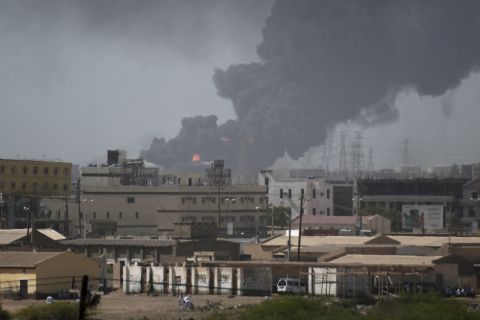Despite its challenges, the financial crisis has pushed the GCC to innovate and re-create an attractive investment environment on a regional and global level. CPI Financial, publishing house offering market-leading products and services tailor-made for the banking and financial sector, has just released its most recent book titled, Investing in the GCC Markets- New Opportunities in a Changing Landscape, edited by Kamar Jaffer and Sohail Jaffer. Presenting a unique insider’s view only available from leading financial and investment experts, the book offers the most comprehensive survey of key markets in the Middle East.
Dominic de Souza, Chairman of CPI Financial, says: “The global financial crisis has brought on many changes in the Middle East and some, surprisingly positive. Far from slowing down, the region has shown great innovation. With a vast number of opportunities in the region, this book will help readers understand them as well as their potential.”
“Offering an intricate analysis and overview of regional markets, I believe this second edition of Investing in the GCC Markets, to be a vital guide for investors, government entities, decision- makers, and analysts eager to dive into the complexities of the regional market,” continues Robin Amlôt, Managing Editor of CPI Financial.
Available directly from CPI Financial, the book provides in depth analysis and advice on the latest market trends. 28 chapters highlighting the progress in various areas of the financial and banking industry have been put together by highly specialized experts of the world, looking forward to future opportunities for investors. The GCC has a great prospect at growth and expansion, as the book mentions the four main factors driving this macroeconomic picture and the growing mood of optimism are: its demographics, an abundance of natural resources, increasingly sophisticated laws and regulations of the banking and finance industry, and its geographic location. The GCC remains the most desirable among investors looking into the Arab region.
In reference to the positive outcomes of the financial crisis, Albert Momdjian, Managing Director and Head of Middle East & Africa Investment Banking, and CALYON DIFC Branch Chief Executive Officer comments: “One of the key benefits of the cooling off in the region has been reduced inflation, which for some countries has become negative in 2009. The fundamental drivers of growth are in place, and with governments investing in infrastructure projects, the medium-term view is that the GCC is robust enough to weather the current economic crisis.
“However, recent directives by certain GCC countries such as the UAE to reduce the minimum capital requirement have definitely opened up the market to new start-up businesses.”
On the other hand, the various market flaws uncovered by the financial crisis and the potential investment opportunities are also thoroughly discussed; revealing ways of taking advantage of available resources within the GCC and maximizing global investment portfolios within the region. According to a recent study by Hawkamah and the National Investor (TNI), only 2% out of listed companies in the GCC hold analyst meetings or conference calls, 91% of companies do not pre-announce results publication dates, and 19% of GCC companies do not have a website.
One of the well recognized contributors to the book, Dr. Nasser H. Saidi, Chief Economist, Dubai International Financial Centre (DIFC) Authority & Executive Director of the Institute for Corporate Governance (Hawkamah) at DIFC elaborates on the main issues by stating: “The MENA markets stand to gain by adopting institutions and corporate governance frameworks that bolster investor trust through improved disclosure and transparency standards of law.”
In terms of changing market trends, it is highly noted that Islamic finance has weathered the global crisis and is continuously growing. Due to its Shari’ah compliance, the features of Islamic financial systems encompass a thorough screening process, greater transparency and a need to understand the nature of the investment rather than just focusing on returns. Such features ensure a built in checks and balances system that creates a more stable financial institution.
In reviewing Islamic finance, Salmaan Jaffery, Director, Islamic Financial Services Group, Advisory, Ernst & Young, comments: “In light of the recent crisis, Islamic managers are capturing some of the conventional markets that has been put off by the range of toxic derivatives products that exacerbated the effects of the financial crisis. Practitioners and industry watchers have taken note of the increasing interest being experienced from conventional but ‘ethical’ investors who see the value proposition in Islamic products.”
The authors present numerous facts, figures, and practical applications, making it an essential reference for local and international investors. Offering various pieces from experts throughout the region, the book ensures that diverse viewpoints are presented in regards to the risks and opportunities available in the GCC markets.








